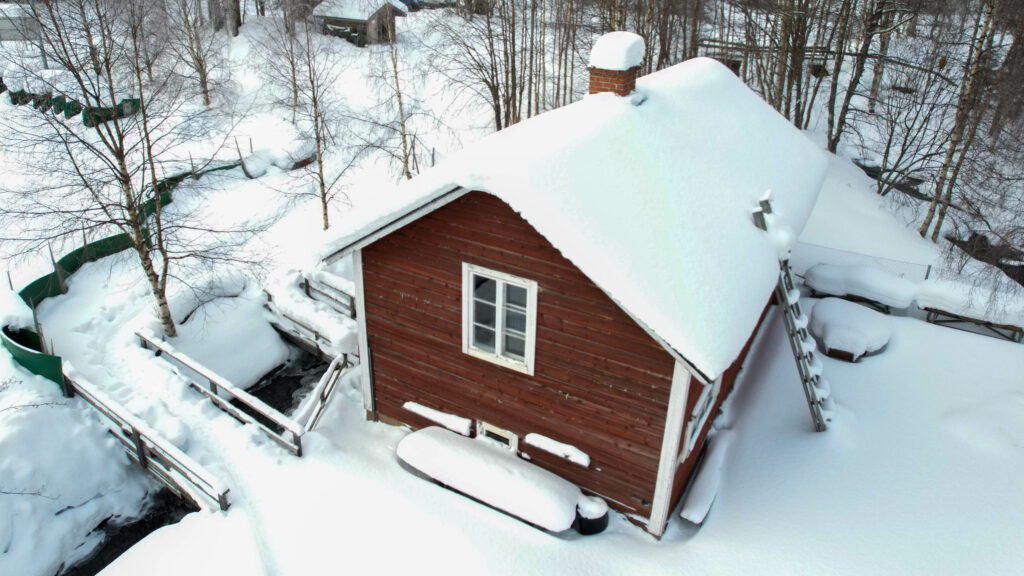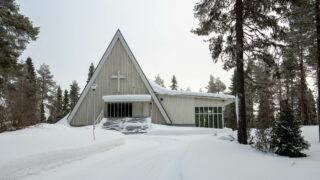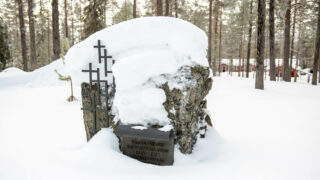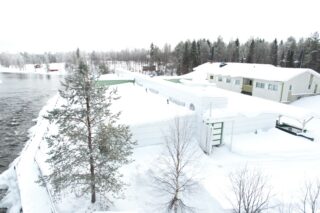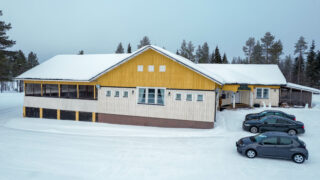Korpihovi
He, who has danced at Käylä’s Korpihovi, wants to go there again. The house has a dance space for about 500 people. In the summer, the outdoor stage can accommodate three hundred more.
Over the decades, the brightest stars of iskelmä and dance music, from Danny to Kaihon karavaani, have performed at Korpihovi. There is enough atmosphere from summer to summer.
Korpihovi is also known as a functional party venue. The house is run by the Käylän Seudun Maamiesseura ry.
Käylän ämmi
Käylän ämmi (grandmother) thinks that the beautiful nature and nice people are the best things in Käylä.
Born in Sodankylä in 1934, Ebba Anneberg (née Yliaska, formerly Ahonen) is a well-known nurse, storyteller, tradition expert, nature lover and role model in Kuusamo.
Ebba, Käylän ämmi, knows the people and customs of both Sodankylä, where she was born, and Käylä, where she lives. Her traditional knowledge, stories about people and villages have been recorded in numerous books, columns, biographical texts, and interviews.
“If someone doesn’t know their past, they can’t appreciate their future,” Käylän ämmi said in an interview in the summer of 2021.
As a newly graduated nurse, Ebba moved to Käylä in Kuusamo in 1957. She was known as an expert and courageous woman, for whom the well-being of women, mothers and children was a matter of her heart.
Käylän ämmi is also known as a nature lover, for whom respecting nature, knowing, and believing in nature have always been a significant part of her life.
“I considered it a matter of honour that I taught all the kids how to make fire and how to whittle feather sticks. All young people must be taught how to light a campfire in the forest. Tell them what kind of wood, lichen or dry needles ignite well. If nothing else helps, cross your hands, and ask the man upstairs for help.
Käylä’s Tukkilaiskisat
Käylä’s Tukkilaiskisat (traditional timber rafting competition) is an annual event that has earned its place on the list of intangible cultural heritage and is suitable for the whole family. There is plenty to see and during the competition there are various events around the village.
The calm water sports are timber rafting, rullaus and the lumberjacks’ oath. In Käylänkoski the competitors take part in timber rafting.
The traditions of the lumberjacks live on strong in Käylä. In the summertime, there are rafting shows at the rapids.
Käylä fish farming facility
A fish hatchery was built on the shores of Käylänkoski in 1934. The hatchery building was destroyed during the retreat of the Germans in 1944 but was rebuilt on the same site in 1946. The hatchery became a significant employer in Käylä.
At the end of the 1960s, the facility began to further raise lake trout fry, and natural feeding pond farming began in 1976. The facility was transferred to the Game and Fisheries Research Institute in the early 1970s. For decades, the Käylä fish farming facility was the centre of research and fish farming in the water bodies flowing east of Kuusamo.
The operation of the fish farm has continued as a business after the Finnish Natural Resources Agency closed down the office in 2015.
Border region church
Käylä border region church is a kota church. The church hall is a place worth visiting: the side walls with windows replace the ceiling. The altar sculpture is the wooden Saviour by Uuno Poikonen. There are seats for about 140 people in the one-nave church.
The wooden church with a gable roof was designed by Olli Vahtera and was completed in 1958.
In the Käylä church, the 16-note organ of the Urkurakentamo Veikko Virtanen Oy plays, and in the belfry (built in 1977) rings a bell donated by the people of Umeå in 1951.
Lotta memorial
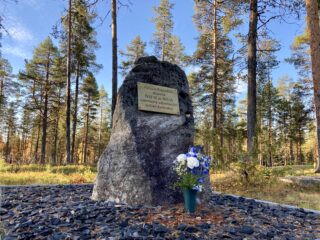
In the courtyard of the border region church is a lotta memorial with the text: “In honour of the lotta who served the fatherland in the Northern Kuusamo region in 1939-40 and 1941-45”.
The lotta memorials are on the right side of the church when viewed from the road. A road leads to the old cemetery between the church and the monuments.
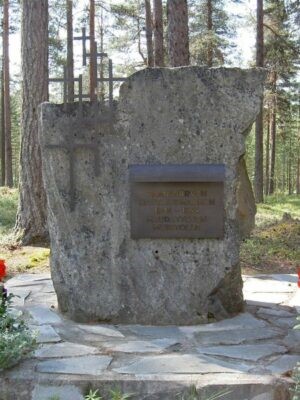
“In memory of those buried in the Paanajärvi cemetery 1934–1944”. The memorial stone is located in the courtyard of the Käylä border region church.
